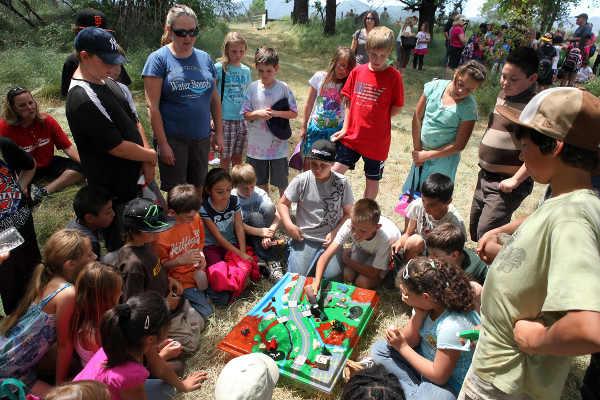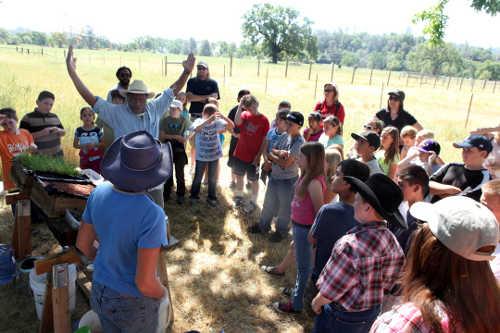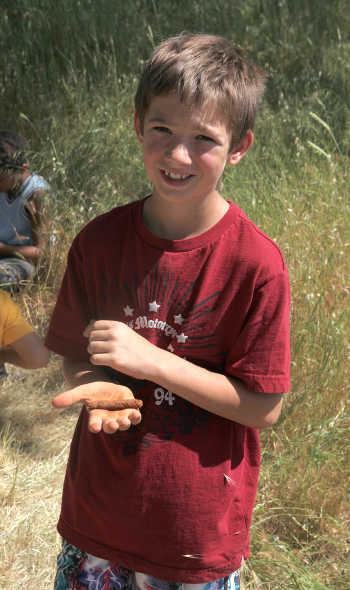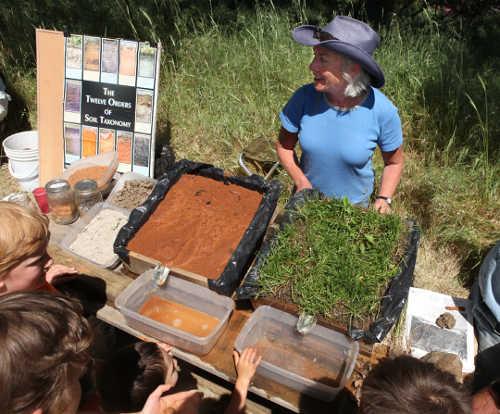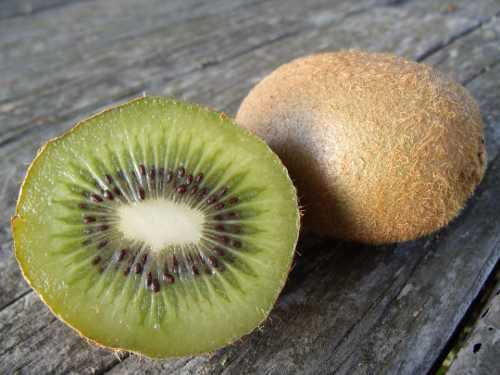
An encounter with a kiwi fruit is a lesson learned: You can’t judge a book by its cover.
Who would’ve guessed that such exquisitely flavored fruit resides in scruffy brown guise?
Kiwi’s burlap-like skin belies not only its flavor, but the translucent green and delicate patterns found within.
Cut crosswise, tiny black seeds scatter amidst a circular starburst of rays in juicy emerald flesh.
I’ve always loved exotic yet approachable kiwi, and I admit that I’m old enough to remember when it became a staple in U.S. supermarkets.
My children were raised with kiwi as common a breakfast food on their morning plates as oranges, and these fuzzy friends still have a prominent place in our fruit bowl.
Native to the Yangtze River Valley in southern China, the kiwi fruit was known there as yangtao. Its indigenous history goes back more than 700 years, where royalty cherished this fruit plucked from vines which grew wrapped around trees.
Word spread about delectable kiwi fruit in the 19th century, and plant cuttings were transported to the United States just after the turn of the 20th.
About the same time, kiwi vines were planted in New Zealand, where its popularity soared and the fruit was renamed the Chinese gooseberry.
Its current moniker, kiwi fruit (also spelled kiwifruit or shortened to kiwi), came in the early 1960s, when a savvy produce distributor felt the U.S. market would be receptive to the fruit. She renamed it to honor the kiwi, a bird native to New Zealand whose fuzzy brown coat resembled the fruit.
By the mid-1970s kiwi fruit was widely available in supermarkets here; prior to that it could only be found in specialty stores.
These days growers are developing other forms of kiwi, such as golden kiwi (which has a less fuzzy coat) and grape-sized versions of the fruit.
The vines on which kiwi fruit grow resemble grapevines, and like them, require vigorous pruning. They grow well in temperate climes which have a fairly warm summer, making Lake County a prime candidate for successful growth.
In fact, Lake County enjoys a bit of kiwi fruit history, something I found out only recently from Lake County resident, Haji Warf, which she, in turn, learned from an Upper Lake, Calif., kiwi grower.
According to Warf, the sprawling Mediterranean-style winery, Ceago del Lago, in Nice, Calif., was once the site of a 30-acre kiwi farm. When kiwi crops began flourishing in other parts of the world, the price bottomed out, forcing the owners to tear out the kiwi vines.
Apparently, the same fate occurred at a large kiwi orchard in Kelseyville, Calif., around the same time.
I’m happy to hear, however, that kiwi vines continue to thrive in Lake County, even if not on a commercial level.
Not surprisingly, kiwi fruit marries well with other fruits, both tropical and otherwise. Some favorite matches are bananas, strawberries, papayas and mangoes, as the sweetness of these fruits (and the smoothness of the banana) provide balance to the sweet-tart note of the kiwi.
Slices of bright kiwi fruit are often utilized for a splash of green in tarts filled with colorful fruit, and since they don’t brown when cut, they’re popular garnishes for a variety of pastries and cakes.
Kiwi fruit may be made into jam, and when combined with lime, a fine marmalade is produced. They’re a refreshing component of sorbets and ices, make great smoothie additions, and do well when juiced with greens.
Kiwi has also found its way into salads, whether with greens, chicken, seafood or grains such as quinoa, couscous or bulgur.
Kiwi is also paired with meat in glazes, marinades or even as a component of a stir-fry.
And speaking of meat, because of an enzyme present in kiwi fruit, it can serve as a natural tenderizer.
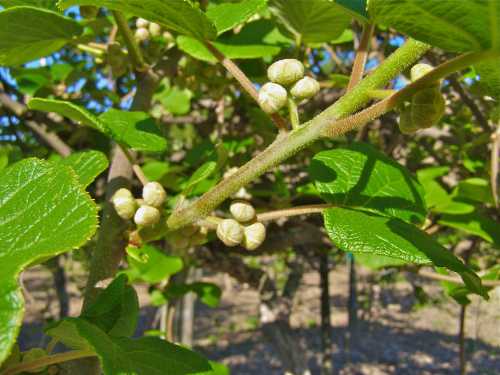
Simply rub a cut kiwi on the meat, or mash a bit of kiwi to spread over it and allow it to sit for 10 to 15 minutes.
Because of this, if kiwi is served with ice cream or other dairy products, it should be eaten right away, before the enzyme has a chance to break down the protein.
This egg-shaped fruit is rich in stores of vitamin C, with one kiwi providing well beyond our daily requirement, giving us antioxidant protection, immune system boosts, cardiovascular benefits, and protection against asthma and macular degeneration.
And because kiwi is high in fiber, it can help lower cholesterol and encourage digestive health.
If these fuzzy little ovals are not allowed to soften to ripeness before being eaten, they may make our mouths pucker.
The riper the kiwi, the sweeter its fruit. When they yield easily to a little pressure, they’re ready to eat.
Though kiwi fruit is often found firm and unripe at the grocery store, a few days at room temperature on the kitchen counter at home will remedy this. For faster ripening, place them in a paper bag with an apple or banana.
Once ripe, store fruit in the refrigerator for up to two weeks.
Between California (where 95 percent of the U.S. kiwi crop is grown) and New Zealand, kiwi fruit is available to us year-round.
I’ve provided two recipes for today, a refreshing lemon-mint cooler made with kiwi, and a fruity spin on spring rolls.
I’m a huge spring roll fan, and thankfully rice wrappers for this dish may be found in most supermarkets. If it’s a little intimidating to work with them the first time, don’t worry. With some practice you’ll have it down in no time.
The way I look at it, if I can do it, almost anyone can.
And before I go, did you know the skin of kiwi fruit is edible? Though most of us throw it away, it’s full of nutrients. If washed and rubbed with a paper towel, most of the fuzz will come off.
I’ve heard that in New Zealand they’re bitten into, skin and all, like a peach. I must admit that I haven’t had the courage to try it this way.
And last but not least, Happy Mother’s Day to all the moms out there. I hope you enjoy your day!
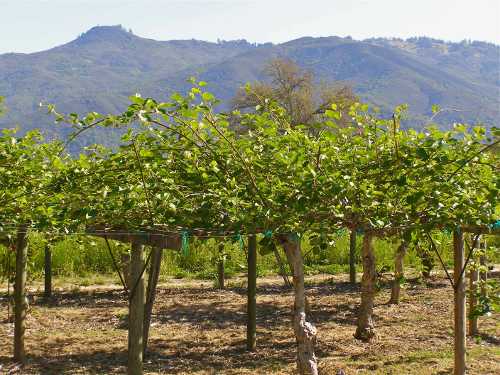
Kiwi mint lemonade
1 cup water
½ cup granulated sugar
½ cup packed fresh mint leaves
3 kiwi fruit
2 to 3 lemons
Sparkling water
In a medium saucepan, heat water with sugar over medium-high heat, stirring occasionally until sugar is dissolved. Simmer, uncovered, five minutes. Remove from heat and stir in mint leaves. Let stand 20 minutes
Meanwhile, peel kiwifruit and cut into chunks. Puree in a food processor. Place puree in a pitcher.
Strain cooled syrup into pitcher, pressing on mint, then discard leaves. Refrigerate until cold.
Squeeze juice from two lemons. Stir into kiwifruit mixture. Taste, squeeze in juice from remaining lemon for a more tart lemonade.
Pour into glasses. Top with sparkling water. Serve garnished with a slice of kiwifruit. Makes about 2¼ cups without sparkling water, enough for four drinks.
Recipe courtesy of the California Kiwifruit Commission at www.kiwifruit.org .
Fruity tropical spring rolls with kiwi
12 rice paper wrappers (found in most stores)
1 ½ cups chopped strawberries
2 firm yellow bananas, chopped
1 mango, cut into matchsticks
3 kiwi, peeled and chopped
1 bunch of fresh mint, chopped or whole leaf
If rolls are double wrapped, this recipe makes six rolls. If not, it makes 12.
Fill a large baking dish with warm water. Dip the rice paper wrap in the water quickly to soften (less than five seconds) and pat dry with paper towel. If using, repeat with a second wrap and lay atop the first one.
Add fruit in the middle of the wrap, beginning with mango (6-8 sticks) and adding the rest on top (about a tablespoon of strawberries, kiwi and banana each).
Be sure not to overfill, and adjust amount of fruit based on whether you’re making 6 or 12 rolls. Mint leaves may be chopped or left whole; add about two to three leaves to each roll.
Once the fruit is on the wrap, fold up the bottom and tuck under the fruit. Fold in each side as you would a burrito, then roll the wrap to the end. It should seal itself since it’s damp.
Serve wraps whole or slice in the middle at an angle. Serve with honey dipping sauce. (Recipe below.)
Vanilla lime honey dipping sauce
1/3 cup honey
¼ teaspoon vanilla extract
Contents of ½ vanilla bean (optional)
Zest of one lime
Combine all ingredients in a bowl, mix and serve.
Recipe adapted from “Vegetarian Times” magazine.
Esther Oertel, a freelance writer, cooking teacher, and speaker, is passionate about local produce and all foods in the vegetable kingdom. She welcomes your questions and comments and may be reached at This email address is being protected from spambots. You need JavaScript enabled to view it. .












